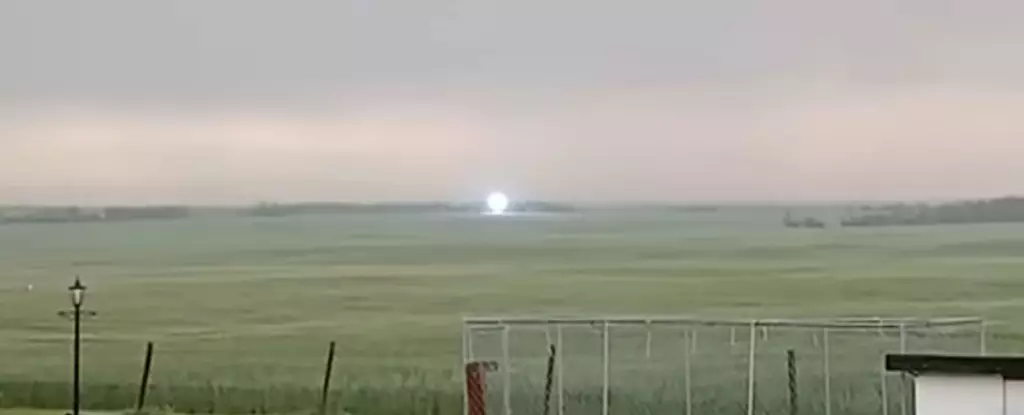In an era where scientific advancements seem to unlock the universe’s deepest secrets, nature continues to surprise us with phenomena that defy understanding. The recent sighting by Ed and Melinda Pardy during a lightning storm exemplifies this, pushing the boundaries of our knowledge about atmospheric mysteries. Their experience underscores the importance of curiosity-driven science—an approach that refuses to accept gaps in understanding as mere anomalies but instead calls for rigorous investigation and open-minded inquiry.
Despite modern science’s progress, ball lightning remains an elusive entity. Its unpredictable nature has kept it on the fringes of scientific verification, yet stories persist across centuries, challenging scholars to reconcile anecdotal reports with physical laws. The Pardy video, capturing a luminous orb following a lightning strike, stirs a profound question: are these phenomena remnants of a long-lost physical process, or merely optical illusions influenced by the environment? The thrill lies in these uncertainties—highlighting the need for scientists to dare to explore phenomena that seem strange or inexplicable, rather than dismissing them as curiosities.
Scientific Limitations and the Pursuit of Knowledge
The scientific community has made tentative strides toward understanding ball lightning, but progress remains painfully slow. Laboratory experiments attempting to replicate these orbs of light often fall short, revealing how little we truly understand about their nature. The Chinese scientists’ accidental capture of a ball lightning event in 2014 exemplifies how unpredictable these phenomena are—despite technological progress, we still stumble upon them by chance rather than through deliberate study.
This ongoing mystery exposes a significant limitation: our current scientific tools and methodologies are not fully equipped to study such fleeting phenomena effectively. The transient and unpredictable qualities of ball lightning demand innovative approaches that blend atmospheric physics, plasma science, and even environmental chemistry. Yet, skepticism persists, partly fueled by a lack of definitive footage, and partly by entrenched assumptions that such phenomena are merely optical illusions or artifacts of electrical interference.
The Pardy footage—while compelling—is yet to be conclusively verified. It exemplifies the broader challenge of embracing phenomena with ambiguous scientific explanations while resisting the urge to prematurely dismiss them. This tension between skepticism and curiosity is vital; it encourages us to refine our methodologies while remaining open to the extraordinary. As science advances, we must recognize that some mysteries may remain unresolved for generations, urging patience and persistent inquiry.
Societal and Cultural Significance of Atmospheric Mysteries
Throughout history, humanity has looked to the skies and created stories around inexplicable phenomena. From ancient fireballs in the sky to modern reports of UFOs, these events tap into a deep well of curiosity and fascination. Scientific skepticism, especially from a center-liberal perspective, advocates for balanced inquiry—an acknowledgment of our current limitations coupled with a commitment to uncover the truth.
The phenomenon captured by the Pardy couple emphasizes something profound: our collective desire to understand the universe is inherently linked to the preservation of scientific integrity, public engagement, and the responsible exploration of unusual events. Dismissing such reports outright would be a disservice to the scientific spirit, which values questions as much as answers. Conversely, uncritical acceptance without verification could lead to misinformation or exploitation of public wonder.
Encouraging a nuanced approach, one that respects anecdotal accounts while demanding rigorous scrutiny, aligns well with a balanced liberalism that welcomes science as a tool for understanding and societal progress. Atmospheric phenomena like ball lightning challenge the scientific community not to close the door on the unknown but to engage with it thoughtfully. Only through this lens can we hope to demystify these powerful spectacles—transforming wonder into knowledge, ignorance into enlightenment.


Leave a Reply